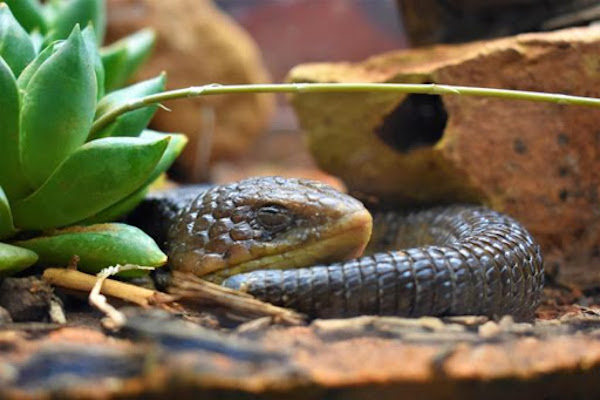Despite… all evidence to the contrary, March really is the beginning of spring. “In like a lion, out like a lamb” and all that… supposedly. Consequently, we start to see all kinds of wildlife return starting this time of year. Some of those returns, like squirrels or robins, are exciting! Others are… less exciting. Unless you love snakes!
Yes, despite St. Patrick’s Day, snakes begin re-appearing starting in March. It’s kind of rude, really. If you’ve started seeing snakes all over the place the past couple days, don’t panic! It’s perfectly normal. Probably. Here’s where snakes were over the winter, why they’re back now, and what they want. We’ll also cover how to keep them away from you. Because, you know, that’s probably what you’re here for.
Where do snakes go in winter?
Snakes aren’t mammals and therefore never enter “true” hibernation, but they do enter a state called “brumation.” Brumation is a hibernation-like state of sustained activity reptiles can enter to conserve body heat during cold weather. Unlike hibernation, brumating reptiles like snakes don’t survive off of stored fat reserves. Instead, they simply use so little energy that they don’t need to eat for long periods. Snakes are actually awake and dimly aware during brumation, but they don’t move around much.
Before they enter brumation, snakes seek out a den called a “hibernaculum” to rest in. Hibernaculum

When do snakes “wake up?”
Snakes begin emerging from brumation as soon as the air temperature rises enough to heat them up. Some snakes even leave brumation for a few days on particularly warm and sunny winter days, just to bask. In general, most snakes “awaken” from brumation permanently starting in early spring, around the same time their prey becomes active. Snakes may stay in brumation longer during particularly snowy or cold springs, or become active sooner during warm springs.
If you want to estimate when snakes may re-emerge, pay attention to the average daily temperature. As soon as temperatures rises above freezing consistently or for several days in a row, expect snakes to reemerge. Snakes also prefer sunny, mild days. You’re most likely to see them on sunny, mildly warm spring days. They’ll probably sun themselves on rocks, driveways, sidewalks, and other heat-reflecting surfaces. Snakes also tend to come out after periods of rain.
What do snakes want this time of year?
When snakes emerge from brumation, they’re cold, sluggish, and hungry. They’ll spend their time hunting, finding sunny places, and simply basking in the sunshine. Snakes seek out sunny, warm, and open areas to bask in spring. Basking in sunlight helps them regulate their body temperatures quickly and restores their strength. Heat reflecting surfaces like driveways, sidewalks, glass, or other open areas are highly preferable. The faster snakes can get warm again, the faster they can return to normal activity.
Snakes also spend springtime hunting. Ironically, to do this they have to avoid the sunny, open places they might otherwise enjoy. Snakes hunt in dark, humid, and sheltered areas. Generally, they’ll hunt in the underbrush, tall grasses, or around cluttered areas. They’re most frequently found near water, where they can easily intercept prey. The ideal snake habitat caters to both of a newly-awakened snake’s somewhat-contradictory needs. They want a place to hunt and a sunny place to bask. Preferably nice and close to each other.

How can I keep snakes away from my home?
The ideal snake habitat is a combination of cluttered and dark, and bright and open. That’s why they’re so common near park paths, river banks, and gardens. To avoid encountering snakes around your home, make sure you aren’t inadvertently giving them what they want. Start by decluttering your yard as much as possible. Clean up any fallen debris that may have stacked up over the winter. Clear open spaces to increase visibility and deprive snakes of cover.
Next, look for any areas where excess moisture may accumulate. Just like everything else, snakes need water to survive and remain active. They’re also attracted to moisture because their prey is attracted to moisture. Find and patch up plumbing leaks or dripping faucets. Look for puddling, runoff, or melting snow. Start outside, but don’t forget to look for leaks inside, either. Finally, doublecheck on cracks and crevices, especially around your home’s foundation, deck, and porch. If snakes can’t find a shelter near your home, they won’t stick around.
Hopefully, learning that snakes are supposed to be around this time of year helps make them a less frightening. Yeah, we know it doesn’t really work this way. If you’re tired of seeing snakes around your home, give Varment Guard a call. Our experts can safely, humanely trap and remove them for you, no problem. Have a great (hopefully snake-free) spring!






